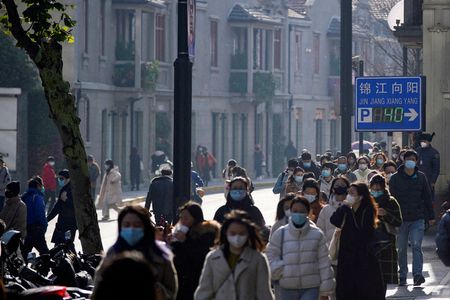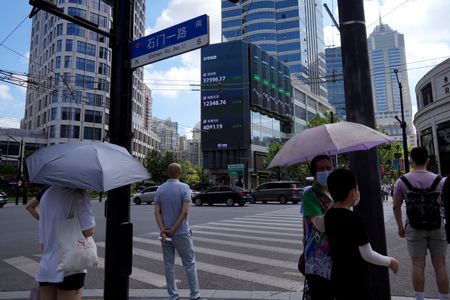By Jamie McGeever
(Reuters) – A look at the day ahead in Asian markets from Jamie McGeever.
Global market trading properly kicks into gear on Tuesday, with the latest insight into how China’s manufacturing sector closed last year likely to set the tone for the day ahead in Asia.
China’s Caixin manufacturing purchasing managers index for December is expected to remain in recessionary territory for a fifth straight month, falling to 48.8 from 49.4 in November.
This follows official PMI data at the weekend that showed the sharpest pace of contraction in December in nearly three years as COVID-19 infections swept through production lines after Beijing’s abrupt reversal of anti-virus measures.
GRAPHIC: China PMIs – official https://fingfx.thomsonreuters.com/gfx/mkt/lbvgggekavq/ChinaPMI.jpg
The world’s second-largest economy is going through an incredible amount of economic, political and social upheaval, which will be intensified in the coming weeks and months by Beijing’s recent U-turn on its zero-COVID policy.
UK-based health data firm Airfinity estimates that around 9,000 people in China are probably dying each day from COVID, and expects COVID cases to reach their first peak on Jan. 13 with 3.7 million daily infections.
China firing on something approaching all cylinders would offer a much-needed boost to the world economy this year. The impact on asset markets, however, is less obvious as potential inflationary pressures from the economic reopening could force central banks to keep interest rates higher for longer.
GRAPHIC: China economic surprises https://fingfx.thomsonreuters.com/gfx/mkt/lgvdkkzddpo/ChinaEconSurprises.jpg
The consensus among economists that the U.S. economy will slip into recession this year is unusually and remarkably strong. This points to a poor outlook for earnings and equity performance, even if some investors say this is the perfect set-up for a contrarian bullish investment strategy.
In the near term, however, China COVID fears may overshadow the long-term benefits and weigh on sentiment accordingly.
It’s fair to say investors are glad to see the back of 2022. World stocks lost around $14 trillion and posted their second-worst annual performance on record, and bonds had their worst year in decades. Together, a typical ’60-40′ portfolio of stocks and bonds had one of their worst years in almost a century.
Much of that can be blamed on nearly 300 rate hikes around the world last year. But while much of the global tightening has been delivered the full effects have not been felt.
A cautious start to the year for markets, and a gloomy Chinese PMI report, would come as no surprise.
Three key developments that could provide more direction to markets on Tuesday:
– Australia manufacturing PMI (December)
– China Caixin manufacturing PMI (December)
– U.S. manufacturing PMI (December)
(Reporting by Jamie McGeever in Orlando, Fla.; Editing by Jonathan Oatis)


